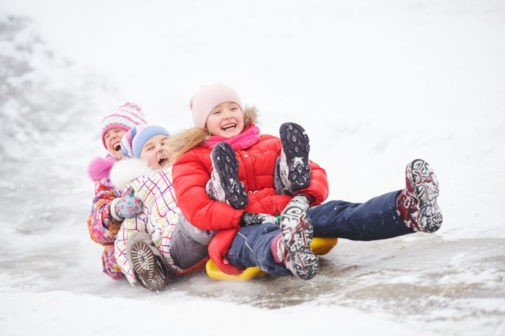Tips for Keeping Children’s Bodies & Minds Busy This Winter
 For kids, post-holiday winter shouldn’t mean hibernation. Instead, parents should be looking into safe physical activities to keep their children’s bodies and minds active.
For kids, post-holiday winter shouldn’t mean hibernation. Instead, parents should be looking into safe physical activities to keep their children’s bodies and minds active.
According to Advocate Aurora pediatrician Dr. Allison Blonski, most American grade-school children are not getting the 60 minutes of exercise they need each day.
“Especially during the pandemic, when we can’t always rely on school schedules, it’s up to parents to see that their kids are getting the physical activity they need each day for healthy growth,” she says.
The benefits of exercise are numerous and life-long. Kids have a lot of energy, so they need exercise to help keep them emotionally calm and mentally focused. Plus, physical activity during growing years builds bone density that will last a lifetime.
But how to stay active during the cold days of winter coupled with a pandemic? Dr. Blonski offers these tips on how to stay active:
Be creative:” We’ve all become creative at finding ways to do other things in this pandemic. In the same way, parents should think outside the box when it comes to physical activity for their children during the winter months,” she says.
- It’s easier to reach 60 minutes if you break it up throughout the day. Take 15-minute spontaneous breaks for fun stretches and jumping jacks.
- Take a dance break when a favorite song comes on. Dance is a great physical activity for kids. Music is free, so there’s no investment but time and energy.
Make it routine: Set specific times in the child’s schedule for physical activity, like the end of the school day or after dinner.
- Take your kids, even infants and toddlers, on routine short walks. Exploring natural surroundings and using the experience for learning is a great way to keep moving and interact as a family.
- Turn chores into a fun activity when you add music. You can get a lot of action just by working around the house or yard.
Play outside: Bundle up and get kids outside as much as possible. They’ll learn to embrace nature’s seasons, and to learn how to listen to their bodies to know when they are cold.
- Winter activities like sledding are especially robust. Kids burn a lot of energy and build strength just going up and down a small sled hill.
- Make sure kids are appropriately bundled up. If they have been playing in the snow, get them totally dry when they come in.
Play inside: Many of us have invested in home gyms recently, but grade school children should not use equipment such as treadmills. These machines are made for adult sizes and present a danger for falling, or for small hands or feet getting caught in the machine.
- Give your children control to choose a fun indoor activity, such as playing Wii or Xbox. Create their own games with jumping rope or jumping jacks.
- Set rules for time spent playing video games, watching TV and using the computer (except for schoolwork). Instead, play an active family game, dance to favorite music or go for a walk.
Track progress. School age children like sticker charts or lists for tracking progress. Let them check it off when they hit their goals.
“Use incentives to help develop good habits,” says Dr. Blonski. “Good habits, like good bones, last a lifetime.”
Tags: #health, #mentalhealth, #olwparish, #parishnurse

Comments are closed here.